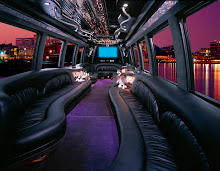A limousine is regarded as the essential vehicle of style, and it evokes a sense of mystery and appeal.
Long, sleek, shiny, cars like these are sure to make heads turn when they come around your street. However, since these are truly expensive vehicles, the number one priority should be finding ways to effectively maintain your vehicles’ condition and durability.
Since many parts of your luxury vehicle are inter-related, ignoring maintenance can often lead to failure of other parts, or an entire system. By neglecting even the most simple preventive maintenance tasks, such as changing the oil or checking the coolant, can lead to poor fuel economy, unreliability, or costly breakdowns, and could invalidate your limousine’s warranty.
Maintenance Guidelines To Follow In Avoiding Costly Repairs
One of the best ways in keeping a limousine in tiptop good condition is to follow the respective limo manufacturer's maintenance schedule in your owner's. However, if you do not have an owner's manual, try to contact the manufacturer to obtain one or to get a recommended maintenance schedule.
Some repair shops fashion their own maintenance schedules, which sometimes requires more frequent servicing than recommended by the manufacturer. Try to check and compare shop maintenance schedules with those recommended in your owner's manual. Ask the shop to explain, as well as make sure you understand why it recommends service beyond the recommended schedule.
What To Look Out For When Selecting A Repair Shop
If you feel the need to have your limo constantly checked and fine-tuned, you need to enlist the services of a professional repair shop that would take good care of your vehicle. Look for an auto repair shop before you need one, to avoid being rushed into last-minute decisions. Ask for recommendations or referrals. Getting a good shop thru word-of-mouth is often the best advertising for a good technician.
Ask friends, relatives, family members and others for referrals of repair shops or technicians they trust and recommend. In addition, state or local law may require the repair shop to be licensed or registered, and you should ask to see current licenses. For best results, check among comparable shops for the best deals.
Vehicle Components To Continuously Check On
Whenever you’re driving, or at the backseat of your limo, difficult handling, a rough ride, vibration and poor performance are the kinds of symptoms you feel sometimes. When the driving experience doesn't feel quite right, be on the lookout for:
- Engine. It’s time to call in the repair boys whenever you feel symptoms such as difficulty starting the engine, rough idling or stalling, poor acceleration, poor fuel economy, excessive oil use (more than one quart between changes), or when the "check engine" light on the instrument panel is lit.
- Transmission. Poor transmission performance may come from actual component failure or a simple disconnected hose or plugged filter. Ensure that the technician checks the simple items first; transmission repairs are normally expensive.
- Steering problems. Wandering of difficulty steering in a straight line can be caused by misaligned front wheels and/or worn steering components such as the idler arm or ball joints. The vehicle's tendency to steer to the left or right, can be caused by something as simple as under-inflated tires, or as serious as a damaged or misaligned front end.
- Ride and Handling concerns. Worn-out shock absorbers or other suspension parts can contribute to poor cornering characteristics. Also check for proper tire inflation. While there is easy rule about when to replace shock absorbers or struts, do this test: bounce the vehicle up and down hard at each wheel and then let go.
See how many times the vehicle bounces. Weak shocks will allow the vehicle to bounce twice or more. Overloading your vehicle can damage your springs. Vehicle tires always should be balanced properly. An unbalanced or improperly balanced tire will cause the vehicle to vibrate and may prematurely wear steering and suspension components.
- Brakes. Prompt diagnosis and repair should be scheduled whenever: the vehicle pulls to the left or right when the brakes are applied; the brake pedal sinks to the floor when braking pressure is maintained; scraping or grinding is heard or felt during braking, and when the "brake" light on the instrument panel is lit.
Vanessa Arellano Doctor
Tuesday, February 5, 2008
Limousine Maintenance Tips And Techniques
Subscribe to:
Post Comments (Atom)

No comments:
Post a Comment